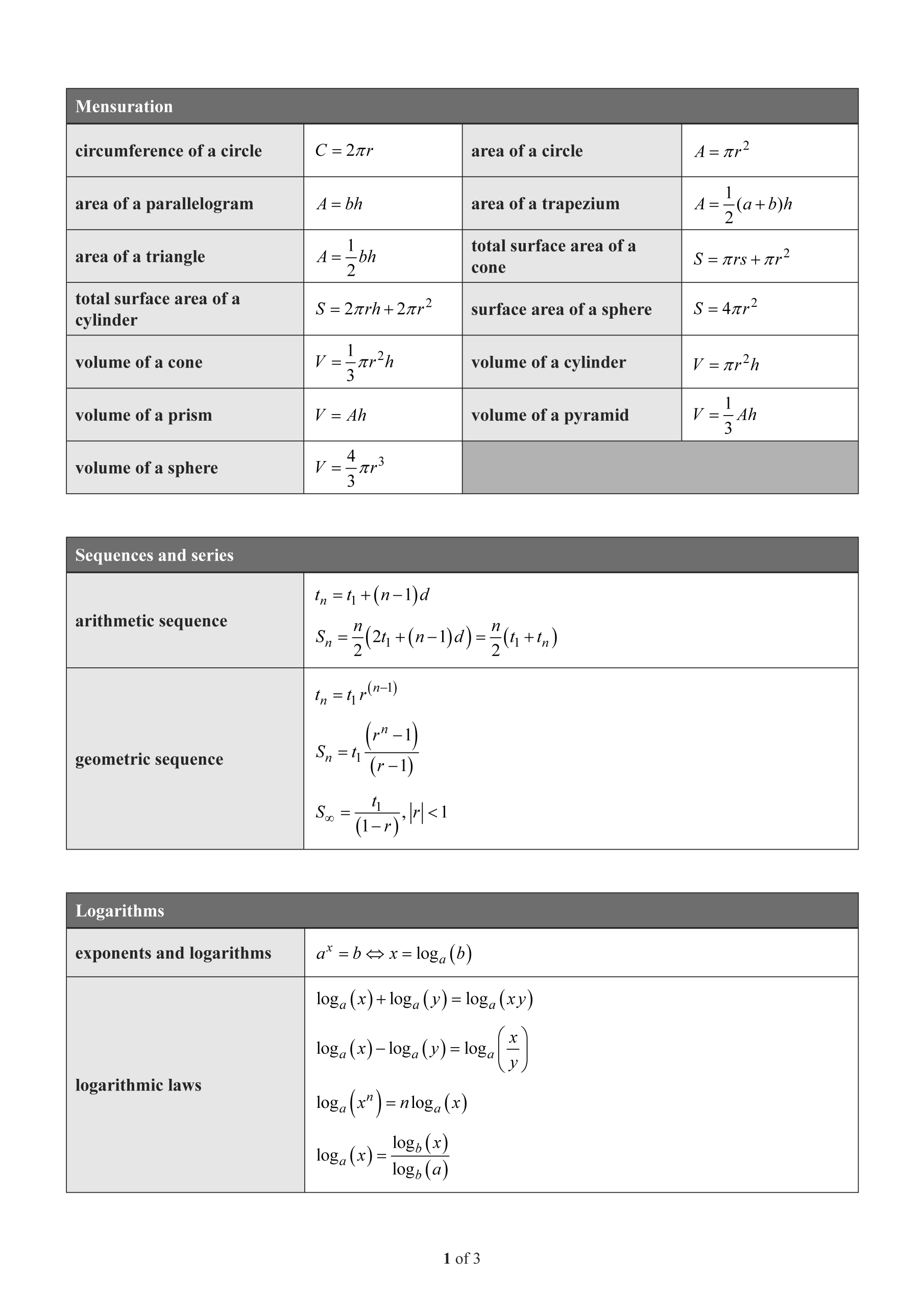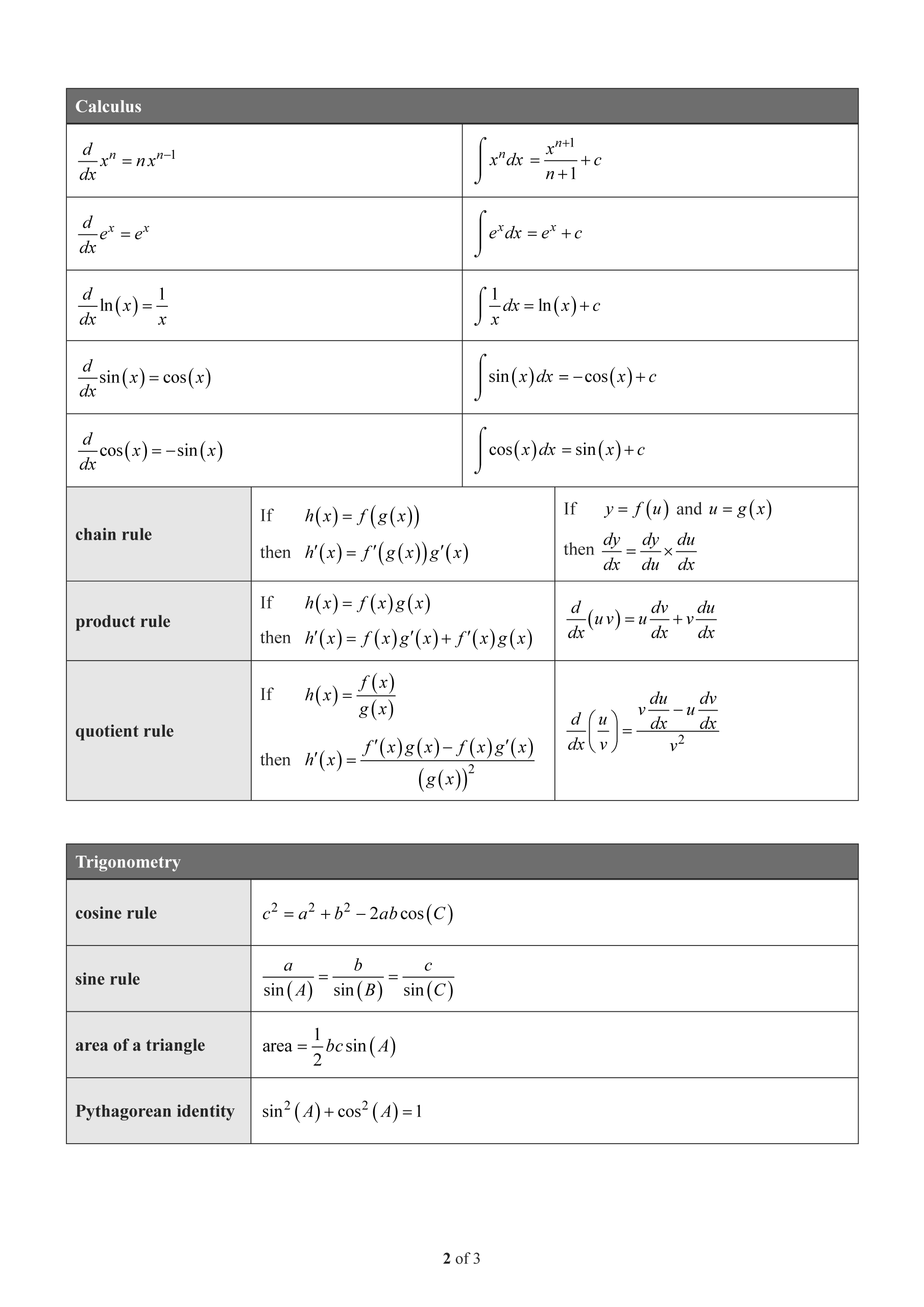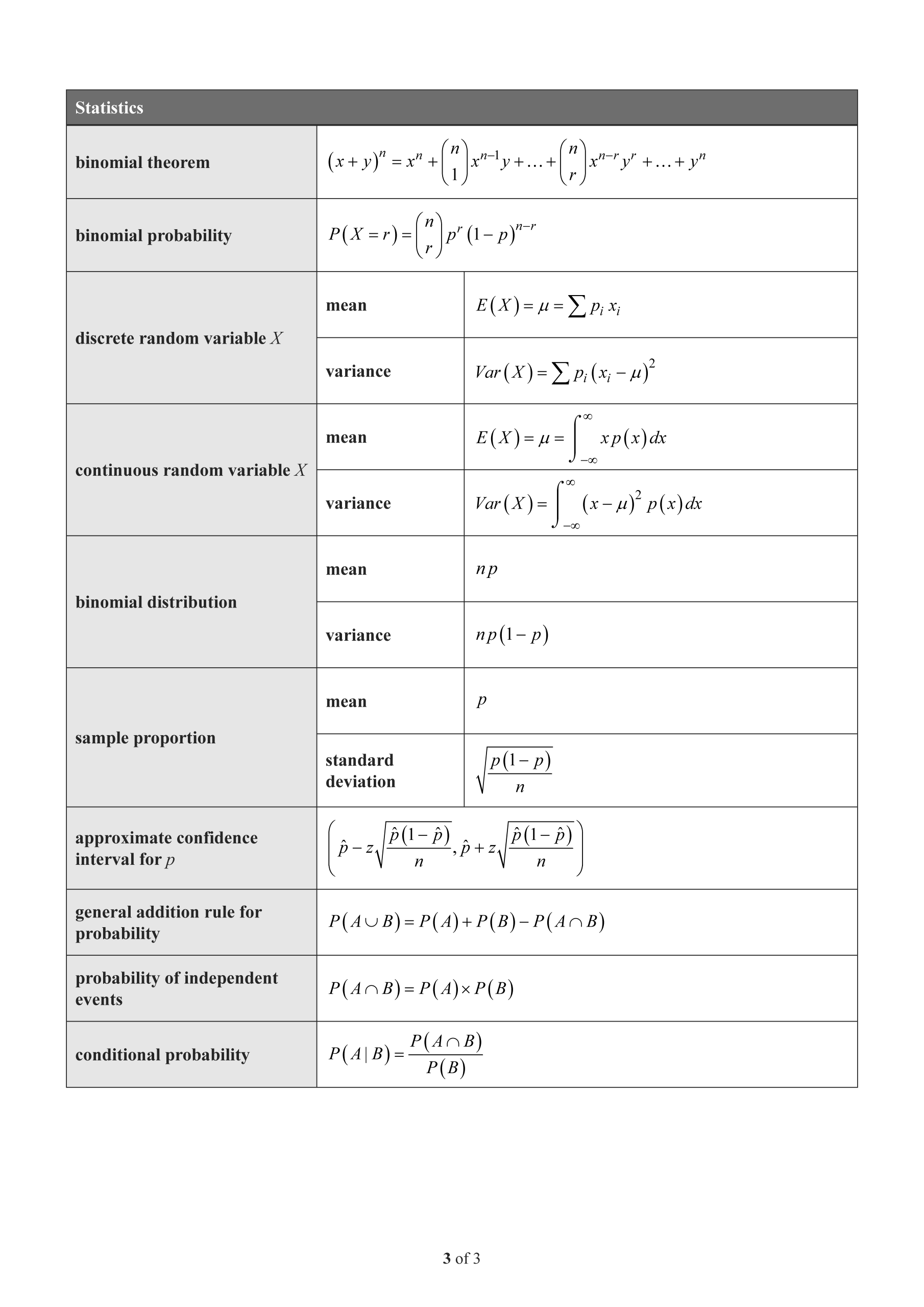QCAA Maths Methods Paper 2 Statistics Mini Test 4
External Assessment Paper 2 — Technology-active
Number of marks: 6
Perusal time: 30 seconds
Writing time: 9 minutes
Section 1
Instructions
• This section has 10 questions and is worth 10 marks.
• Use a 2B pencil to fill in the A, B, C or D answer bubble completely.
• Choose the best answer for Questions 1 10.
• If you change your mind or make a mistake, use an eraser to remove your response and fill in the new answer bubble completely.
The distribution for a sample proportion \(\hat{p}\) has a mean of 0.15 and a standard deviation of 0.0345. The sample size is
- (A) 10
- (B) 14
- (C) 107
- (D) 116
A random sample of people were surveyed about the most important factor when deciding where to shop. The results appear in the table.
| Factor | Percentage (%) |
|---|---|
| Price | 40 |
| Quality of merchandise | 30 |
| Service | 15 |
| Shopping environment | 15 |
If the sample size was 1200, the approximate 95% confidence interval for the proportion of people who identified price as the most important factor is
- (A) (0.395, 0.405)
- (B) (0.386, 0.414)
- (C) (0.377, 0.423)
- (D) (0.372, 0.428)
Section 2
Instructions
• Write using black or blue pen.
• Questions worth more than one mark require mathematical reasoning and/or working to be shown to support answers.
• If you need more space for a response, use the additional pages at the back of this book.
– On the additional pages, write the question number you are responding to.
– Cancel any incorrect response by ruling a single diagonal line through your work.
– Write the page number of your alternative/additional response, i.e. See page …
– If you do not do this, your original response will be marked.
• This section has nine questions and is worth 45 marks.
In a survey of 326 lecturers, 303 said that on at least one occasion a mobile phone had rung in a lecture they were giving.
Determine the sample size required to conduct a follow-up survey that provides 95% confidence that this one-point estimate is correct to within ± 0.02 of the population proportion.
END OF PAPER


